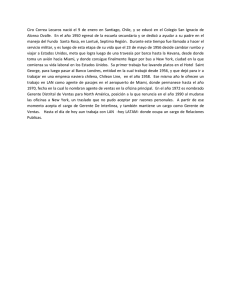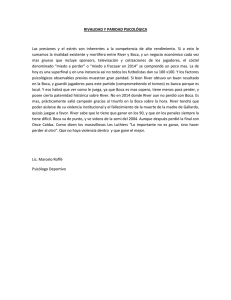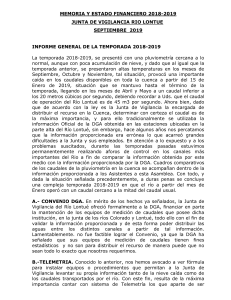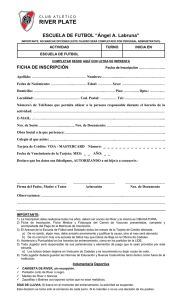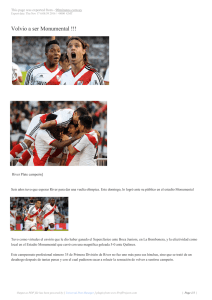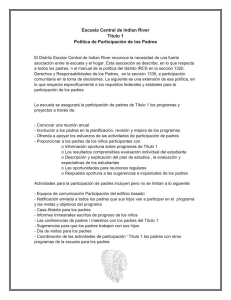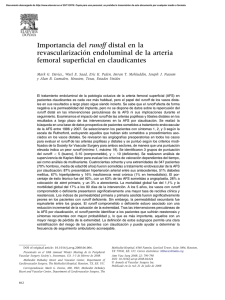Análisis de las escorrentías mensuales y anuales de la cuenca del
Anuncio
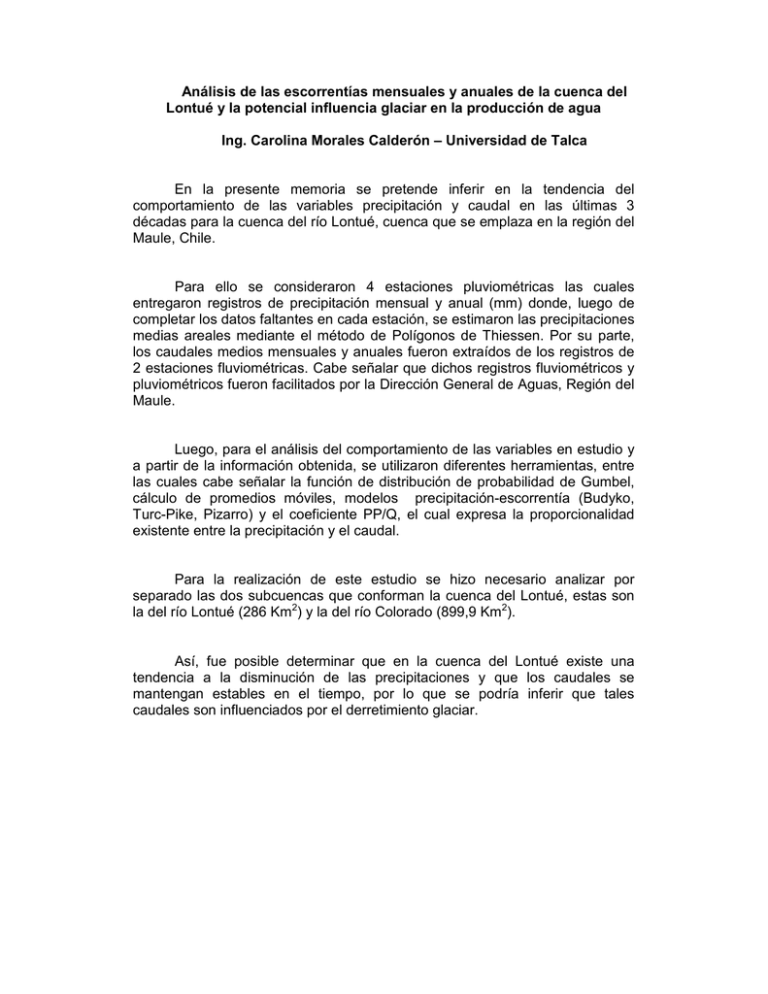
Análisis de las escorrentías mensuales y anuales de la cuenca del Lontué y la potencial influencia glaciar en la producción de agua Ing. Carolina Morales Calderón – Universidad de Talca En la presente memoria se pretende inferir en la tendencia del comportamiento de las variables precipitación y caudal en las últimas 3 décadas para la cuenca del río Lontué, cuenca que se emplaza en la región del Maule, Chile. Para ello se consideraron 4 estaciones pluviométricas las cuales entregaron registros de precipitación mensual y anual (mm) donde, luego de completar los datos faltantes en cada estación, se estimaron las precipitaciones medias areales mediante el método de Polígonos de Thiessen. Por su parte, los caudales medios mensuales y anuales fueron extraídos de los registros de 2 estaciones fluviométricas. Cabe señalar que dichos registros fluviométricos y pluviométricos fueron facilitados por la Dirección General de Aguas, Región del Maule. Luego, para el análisis del comportamiento de las variables en estudio y a partir de la información obtenida, se utilizaron diferentes herramientas, entre las cuales cabe señalar la función de distribución de probabilidad de Gumbel, cálculo de promedios móviles, modelos precipitación-escorrentía (Budyko, Turc-Pike, Pizarro) y el coeficiente PP/Q, el cual expresa la proporcionalidad existente entre la precipitación y el caudal. Para la realización de este estudio se hizo necesario analizar por separado las dos subcuencas que conforman la cuenca del Lontué, estas son la del río Lontué (286 Km2) y la del río Colorado (899,9 Km2). Así, fue posible determinar que en la cuenca del Lontué existe una tendencia a la disminución de las precipitaciones y que los caudales se mantengan estables en el tiempo, por lo que se podría inferir que tales caudales son influenciados por el derretimiento glaciar. SUMMARY The present study concerns the behavior of the variables rainfall and runoff 3 decades for the river basin of the Lontué River, that is located in the Region del Maule, Chile. Four precipitation measuring stations were considered which gave monthly and annual precipitation records (mm), and after completing the missing data for each station, the average areal precipitation was estimated by means of the Thiessen Polygon method. As well, monthly and annual volumes were taken from the records of 2 water guage. It must be stated that these water gauge and precipitation records were made available by the Main Water Directorate, Region of the Maule (Dirección General de Aguas). For the analysis of the behavior of the variables and the obtained data, different tools were used, including Gumbel`s the probability distribution function, calculation of movable averages, rainfall-runoff models (Budyko, Turc – Pike y Pizarro) and the coefficient PP/Q, which expresses the existing proportionality between the rainfall and runoff. To complete this study it became necessary to separately analyze the two subriver basins that form the Lontué river basin. These are basins of the Lontué river (286 Km2) and the Colorado river (899,9 Km2). Thus, it was possible to determine that in the Lontué river basin a tendency to decreasing precipitation exists and that the runoff stays stable over time, for which reason it would possible to infer that the runoff is influenced by the melting glacier.
